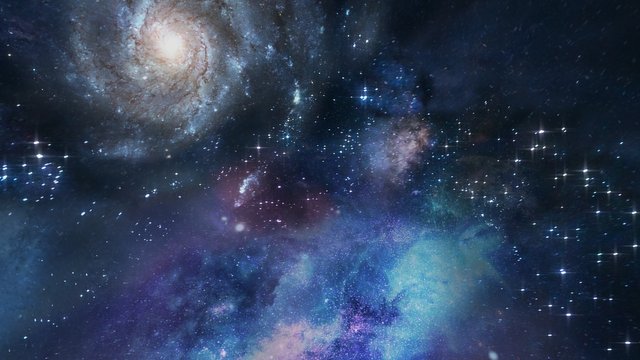“The Cow” Is A Mysterious Space Explosion
Explosion named AT2018cow outshined a whole galaxy. But in many ways it was exceptional and scientists can’t agree on what it actually was. Was it a burp of a supermassive black hole? Or a nontraditional supernova? Or something completely different?

On the sixteenth of July 2018 a short and very unusual explosion lid up the sky for astrophysicists. It got named AT2018cow and scientists immediately started to call it just “Cow”. Over three days the explosion got so bright that it outshined a typical supernova ten times. And over the next months, it was slowly fading out.
The Cow exploded in the galaxy known as CGCG 137-068 in the Hercules constellation that is known for the amount of stars being born there. The first to observe this explosion was a NASA telescope Asteroid Terrestrial-impact Last Alert System that is located on Hawaii.
So, what exactly is The Cow? Nobody truly knows. Two teams recently published their hypothesis that used data from different telescopes including the Neil Gehrels Swift Observatory and Nuclear Spectroscopic Telescope Array. And as you might have guessed, the two hypothesis are quite different.
Astrophysicist Paul Kain and his colleagues from the British University College London think that the cosmic Cow is a black hole that just ate a star. They are convinced that it just ate a white dwarf – the remains of a star similar to our own Sun. They also calculated that the black hole in question should be supermassive and it should have a mass of somewhere between 100 000 and 1 000 000 Suns.
The second team lead by Raffaella Margutti from the Northwestern University in Evanston wants to bet that The Cow is a supernova that just gave birth to either a black hole or a neutron star. They studied The Cow in a wide spectrum of electromagnetic radiation from radio-waves to gamma radiation. They think the explosion was special because it was a relatively small star. Such a supernova would create much less cosmic debris in form of gas and dust and that would affect how we observe such an event.
Sources:
- If you like the content I’m producing about science maybe you will like the content I produce about gaming as well! Be sure to check out my other blogs!
- @gaming-trail Where we are your everyday source of gaming-news!
- @kralizec Where I review video games and make commentaries about video games
🏆 Hi @scisteem! You have received 0.5 STEEM reward for this post from the following subscribers: @cardboard
Subscribe and increase the reward for @scisteem :) | For investors.
To listen to the audio version of this article click on the play image.

Brought to you by @tts. If you find it useful please consider upvoting this reply.
Oh man, i'm glad I came across your blog. Good content for the mind!